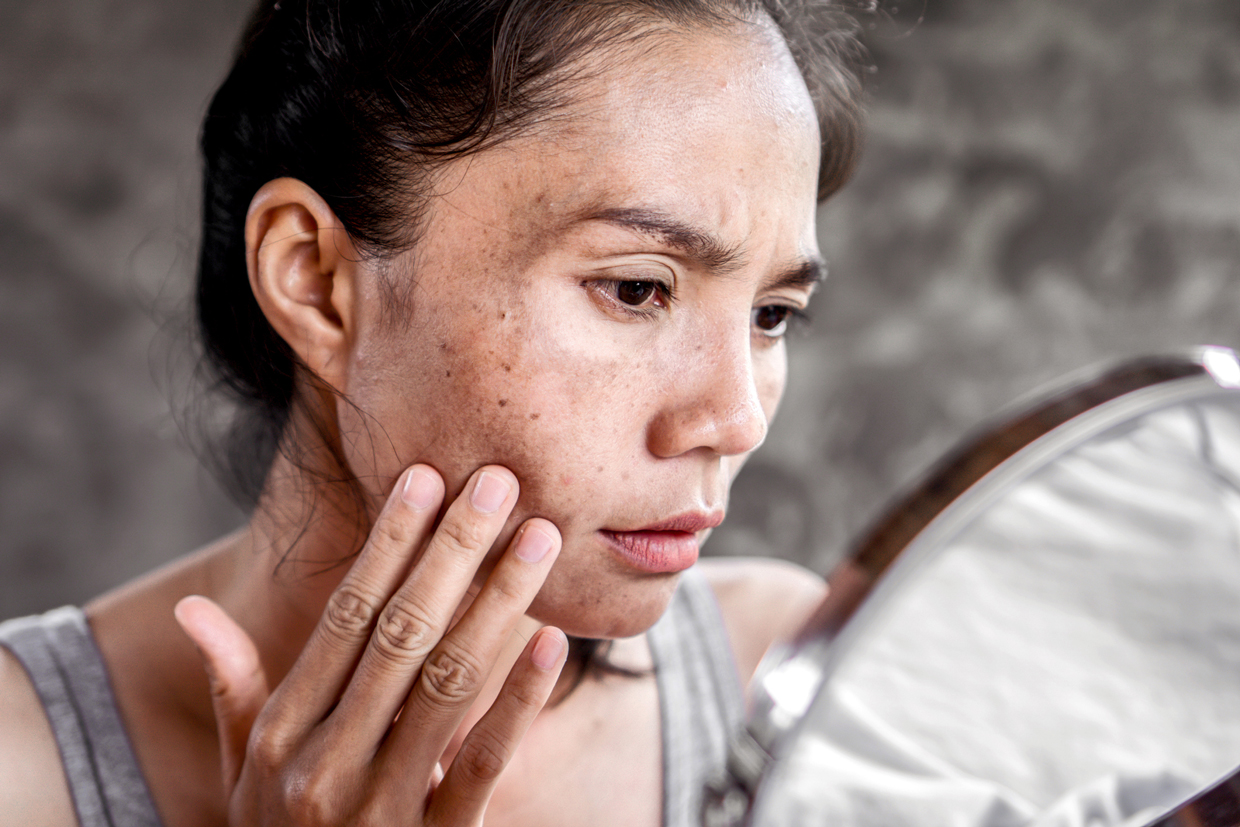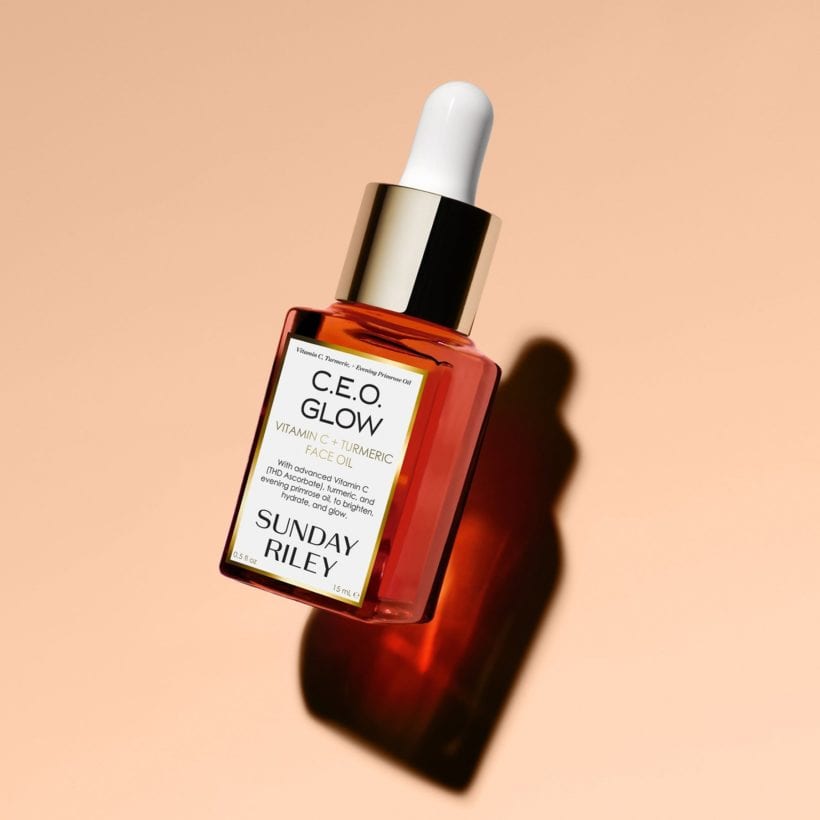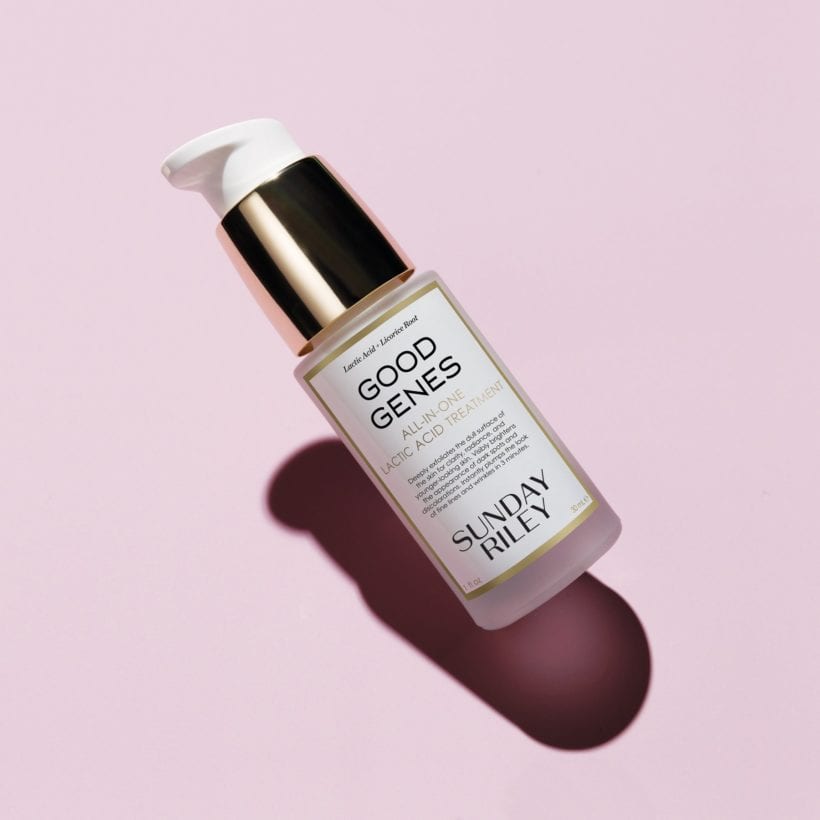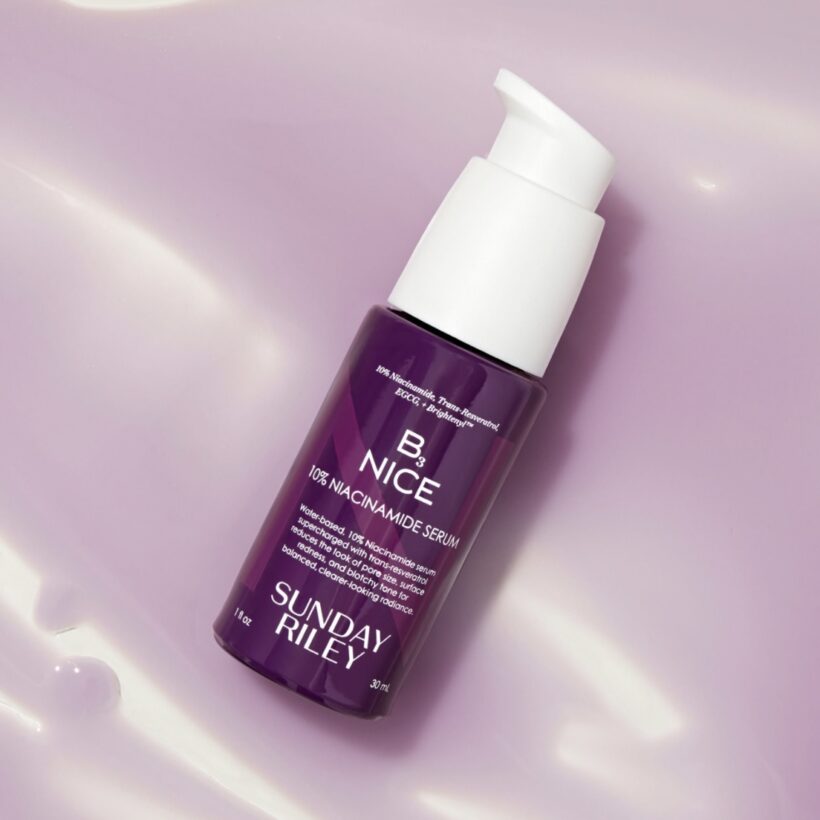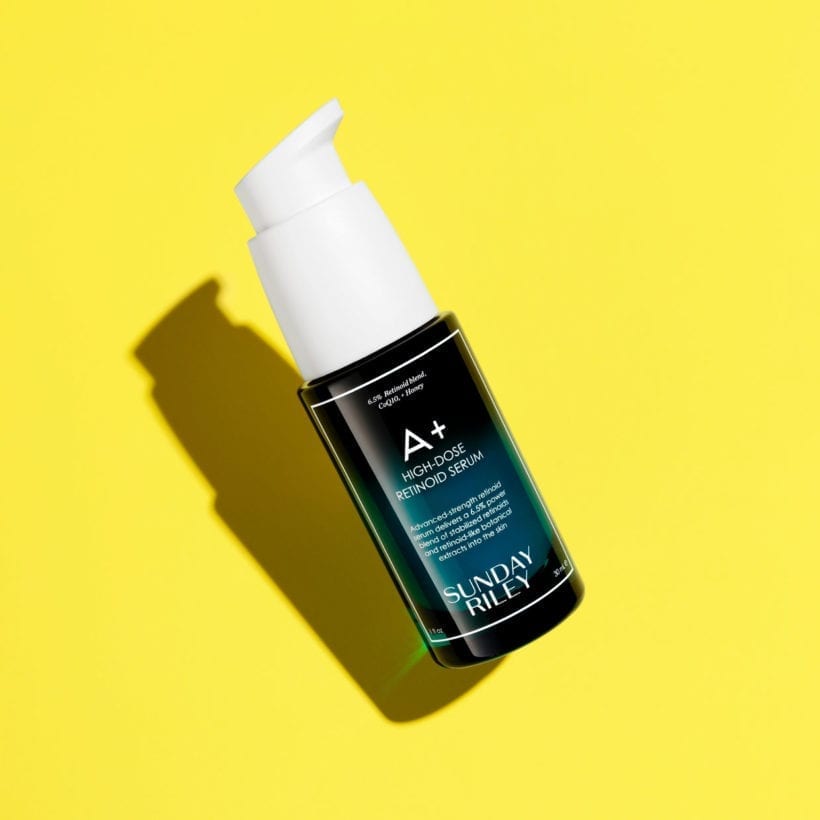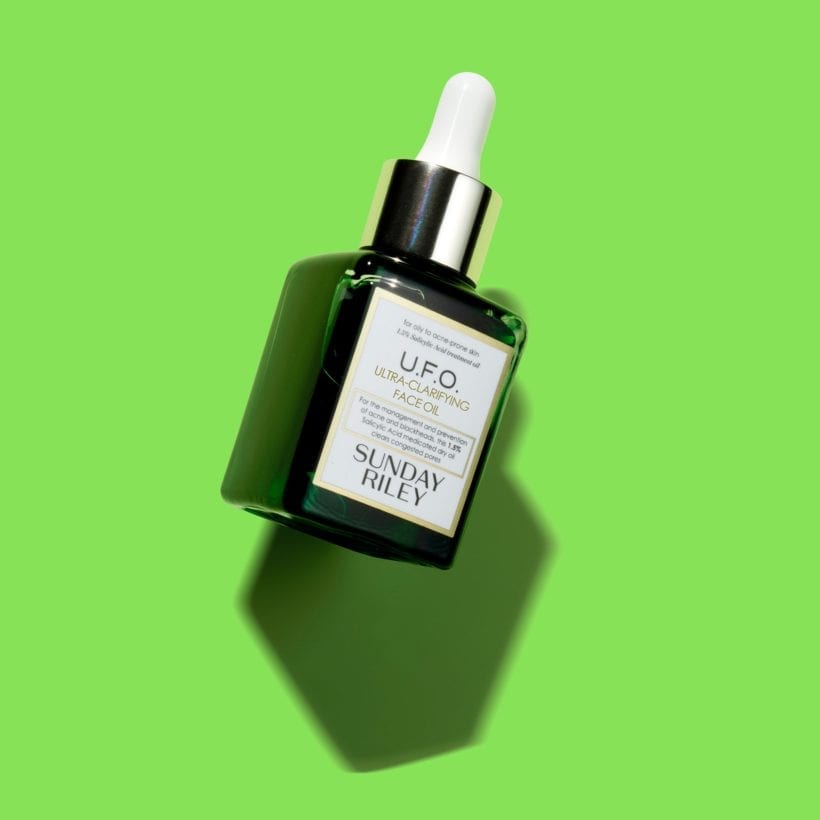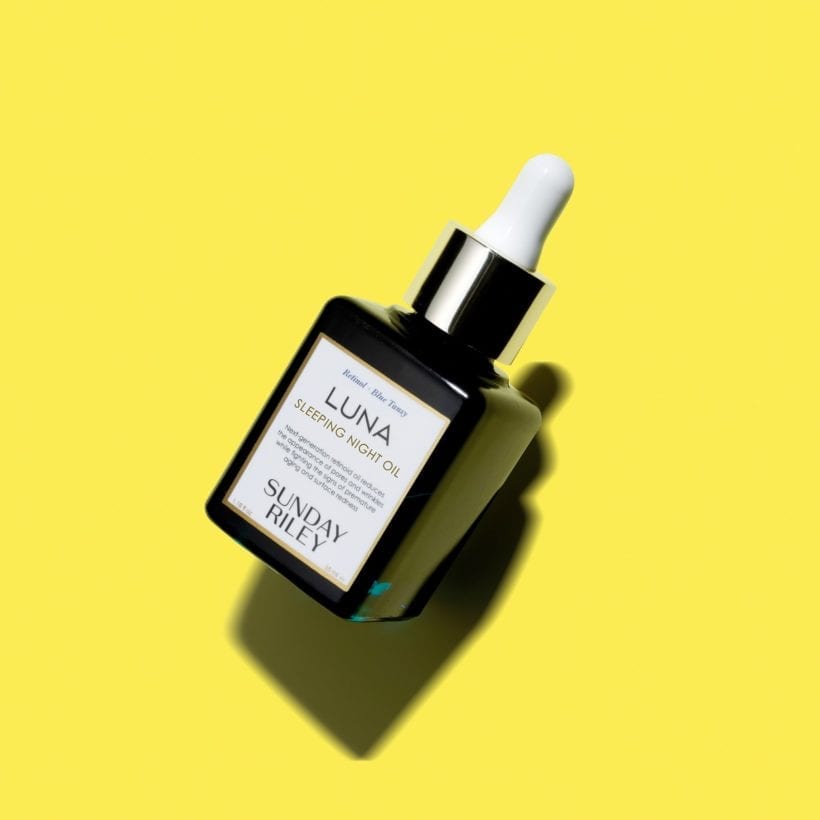Struggling with the uneven skin tone of sunspots? This is one of the most common skin complaints, especially as we move from summer into autumn. Luckily this problem is easily treatable with a mixture of at-home and in-clinic treatments. Here, we quizzed the experts about the best course of action.
Meet the Experts
Sunday Riley , CEO, founder and product formulator
Dr. Ophelia Veraitch , consultant dermatologist
Dr. Ross Perry , medical director of Cosmedics skin clinics
The causes of uneven skin tone
Hyperpigmentation:
- Cause: Excess melanin production due to sun exposure, inflammation (inflammatory skin conditions such as eczema or psoriasis), or hormonal changes. “The cause of the uneven skin tone can be from active inflammation itself, post-inflammatory changes, or the effects of treatment,” Dr. Veraitch noted.
- Solution: Use products with vitamin C, like C.E.O. Glow oil, to brighten and even out skin tone, and Good Genes Lactic Acid Treatment to exfoliate and reduce dark spots.
“Vitamin C is a powerful antioxidant that helps to neutralize free radicals caused by UV exposure. It brightens the skin, evens out skin tone, and reduces hyperpigmentation. C.E.O. Glow contains a stabilized form of vitamin C – THD Ascorbate, which helps to reduce dark spots and promote a more radiant complexion. It also boosts collagen production, enhancing skin elasticity and firmness,” explains Sunday. “Good Genes uses vegan lactic acid, a gentle AHA, to exfoliate the skin. This not only helps in fading dark spots but also improves overall skin texture and clarity. Regular use of Good Genes can lead to smoother, more radiant skin by reducing the buildup of dead skin cells and promoting an even skin tone. It can also reduce the appearance of dark spots and hyperpigmentation.”
Melasma:
- Cause: Hormonal changes, often during pregnancy or from birth control pills. This is where darker patches of skin appear on the skin and often occur in women as they age. “It is associated with hormones (oral contraceptives, IVF, HRT, pregnancy), sun exposure and genetics. It is more common in women with darker skin types,” consultant dermatologist Dr. Ophelia Veraitch explained.
- Solution: Incorporate A+ Retinoid Serum to regulate skin cell turnover and reduce pigmentation, and Pink Drink to firm and resurface the skin. “The A+ Retinoid Serum regulates skin cell turnover, effectively reducing pigmentation and promoting a smoother, more even complexion. Its potent retinoid blend helps to minimize the appearance of dark spots and fine lines, revitalizing the skin’s surface. Pink Drink is a peptide-infused essence that firms and resurfaces the skin. It works by strengthening the skin’s barrier and providing a hydrating boost, which prepares the skin to absorb subsequent treatments more effectively. Together, these products address multiple skin concerns, resulting in a firmer, brighter, and more youthful appearance,” explains Riley. Pregnant influencer Hunter McGrady couldn’t use retinol, so B3Nice 10% Niacinamide serum was a great solution for her. “Addressing melasma requires targeted treatments that help to lighten the pigmentation and improve skin tone. Sunday Riley’s B3Nice serum is an effective solution for this condition. Formulated with niacinamide (vitamin B3), it works to reduce the appearance of dark spots and even out skin tone. Niacinamide is known for its anti-inflammatory properties and ability to inhibit the transfer of pigment to skin cells, making it particularly beneficial for those struggling with melasma. The serum also enhances the skin’s barrier function, improves elasticity, and provides hydration, resulting in a clearer, brighter, and more balanced complexion. Regular use of B3Nice serum can significantly diminish the visibility of melasma, promoting healthier and more radiant skin,” shares Sunday. “Niacinamide helps build healthy skin cells and protect them from damage by UV radiation. These properties help niacinamide regulate skin tone and brighten skin complexion,” Dr. Veraitch said.
Post-Inflammatory Hyperpigmentation (PIH):
- Cause: Dark spots that appear after acne or skin injury. “If you’re prone to picking and squeezing, you could easily end up with scarring,” Dr. Perry highlighted.
- Solution: Use U.F.O. Ultra-Clarifying Face Oil to treat acne without over-drying, and Good Genes to exfoliate and fade the spots. ‘‘Hexylresorcinol, an active ingredient in U.F.O., specifically targets post-acne redness and discoloration, helping to even out the skin tone. This makes U.F.O. a versatile treatment that not only addresses acne but also improves overall skin clarity and radiance. This unique blend effectively targets acne and blackheads without over-drying the skin, making it suitable even for those with dry or sensitive skin,” explains Riley.
Sunspots (Solar Lentigines):
- Cause: UV damage is one of the most common culprits for uneven-looking skin, which shows itself in pigmentation on the face, fine lines and wrinkles, and eventually sunspots. They tend to appear as small, flat and darkened patches of skin that are light brown to black in color and are most common in people over the age of 40. “Skin pigmentation is caused by an increased production of melanin, the natural pigment that gives our skin its color. Excessive sun exposure increases the amount of melanin that the skin produces. The dark spots on our skin are generally triggered by over-exposure to the sun,” Dr. Perry explained.
- Solution: First things first, avoid excessive sun exposure by wearing appropriate clothing (like a wide-brim hat or long sleeves) and get into the habit of wearing an SPF on a daily basis, no matter the weather. “I would always advise getting a full skin examination and advice from a dermatologist. They will be able to tell whether the sunspots need treating or not,” Dr. Perry said.
Apply C.E.O. Glow oil for its antioxidant protection and brightening effects and Good Genes for exfoliation and spot reduction. Riley protects her skin from sun damage through a multi-faceted approach that includes the use of broad-spectrum sunscreen, antioxidants, and physical barriers like wide-brimmed hats to shield her face and neck, opts for long-sleeve clothing to cover her arms, and seeks shade whenever possible to minimize direct sun exposure. 
Vitamin C helps to neutralize free radicals caused by sun exposure and aids in repairing existing damage, resulting in a brighter, more even skin tone. To maximize sun protection, Sunday recommends reapplying sunscreen every two hours when outdoors. Additionally, she emphasizes the importance of antioxidants in skincare to combat free radical damage caused by sun exposure.
Freckles:
- Cause: Genetic predisposition and sun exposure.
- Solution: Use products with sunscreen to prevent further darkening, and C.E.O. 15% Vitamin C Brightening serum to brighten and even out skin tone. “C.E.O. Serum is a game-changer for protecting freckles and sun damage. Packed with a potent dose of stabilized vitamin C, it brightens the skin, reduces hyperpigmentation, and repairs the damage caused by UV exposure, leaving your complexion clearer and more radiant,” adds Riley.
Age Spots:
- Cause: Aging and sun exposure over time, leading to dark, flat spots.
- Solution: Retinoids, a hero for all skin types and a must-have in any bathroom, could also tackle uneven skin. “They are very effective at treating uneven skin tone because they encourage cell turnover, exfoliating old, dull cells and allowing new healthier skin cells to come to the surface,” Riley pointed out. Consider vitamin C, which Riley recommends: “I’d use a vitamin C serum which is rich in antioxidants and targets uneven skin tone as well as hydrates the skin to make it appear brighter, firmer, and smoother.”
Remember, prevention is as important as a cure so wearing sufficient sun protection is vital in terms of protecting against sun damage. “Wear a broad-spectrum SPF daily. For people with pigmented skin, physical sunblocks tend to provide better protection,” Dr. Veraitch suggested.
In-clinic procedures
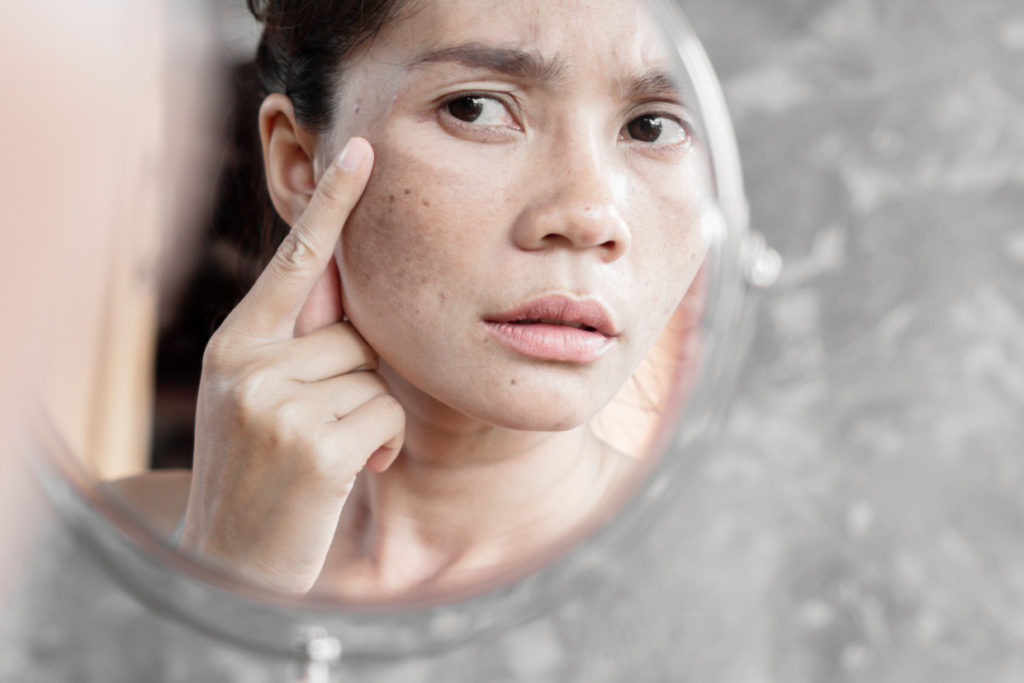
If you are still struggling with consistent uneven skin tone after amping up your at-home routine, it might be worth trying a more powerful in-clinic procedure. Microneedling is a minimally invasive skincare treatment that involves the use of fine needles to create tiny punctures in the skin. This process stimulates the skin’s natural healing response, promoting collagen and elastin production, which can improve skin texture and reduce the appearance of scars, fine lines, and hyperpigmentation.

“After undergoing microneedling, it’s crucial to support the skin’s healing process with effective aftercare. Using a serum like B3Nice can significantly enhance recovery. B3Nice is formulated with niacinamide (vitamin B3), which has anti-inflammatory properties that help to soothe the skin and reduce redness and irritation. Additionally, niacinamide boosts the skin’s barrier function, enhancing its ability to retain moisture and protect against external aggressors. This makes B3Nice an ideal post-microneedling treatment, as it accelerates healing, reduces inflammation, and promotes a clearer, more even complexion. By combining microneedling with B3Nice, you can achieve optimal skin rejuvenation and repair,” adds Riley.
We only recommend products we have independently researched, tested, and loved. If you purchase a product found through our links, Sunday Edit may earn an affiliate commission.
